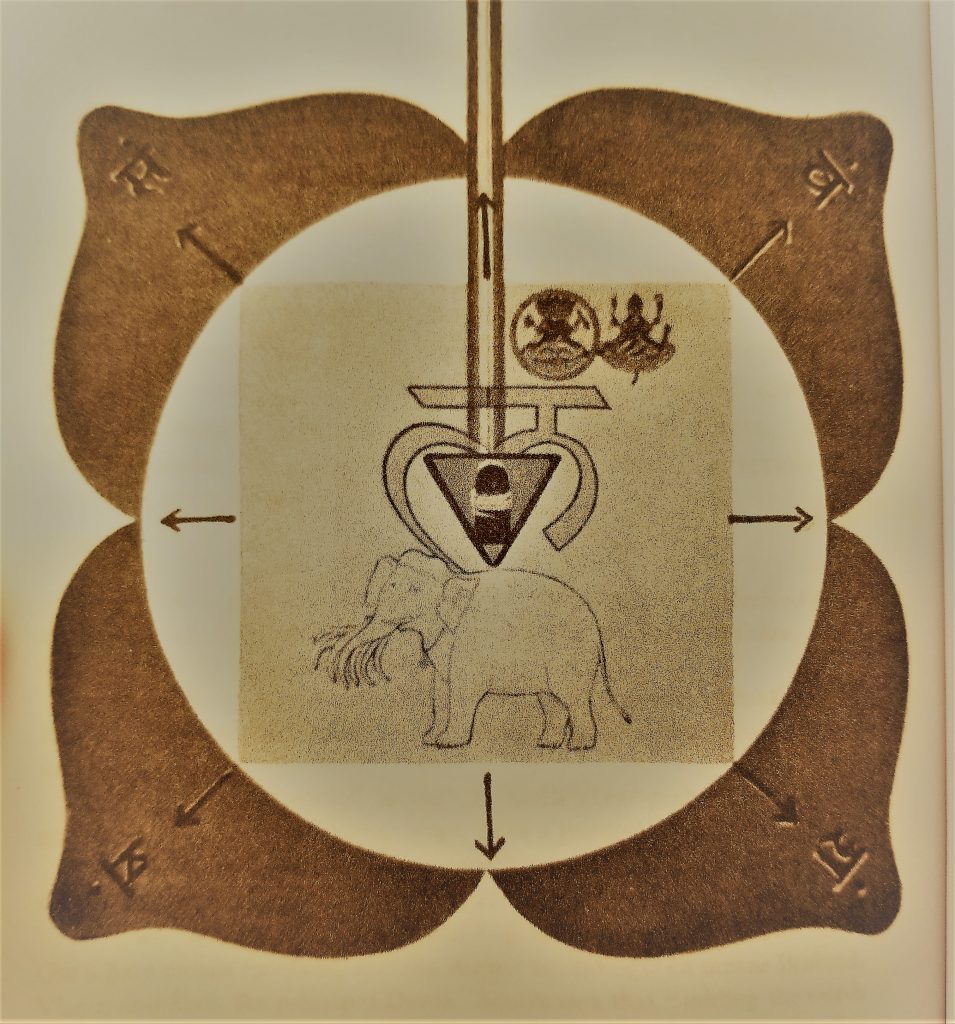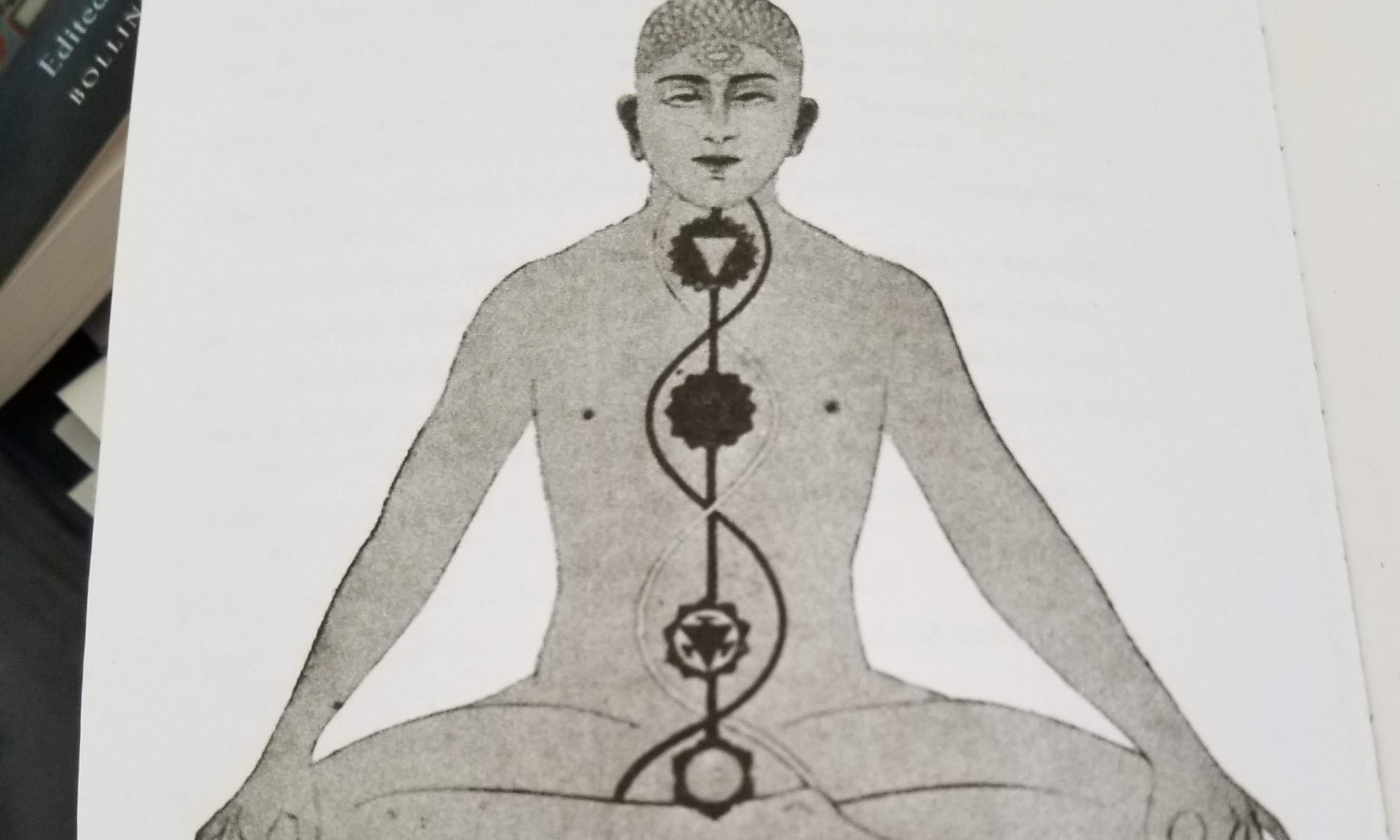“By meditating thus on her who shines within the muladhara chakra, with the luster of ten million suns, a man becomes lord of speech and king among men, and an adept in all kinds of learning. He becomes ever free from all diseases, and his inmost spirit becomes full of great gladness. Pure of disposition by his deep and musical words, he serves the foremost of the devas (divine beings).”
Description of the Six Centres, Verse 13
Muladhara – The Root Chakra
The first chakra, the lowest chakra, is muladhara – the root. Think about it like you are sitting on the ground, cross-legged, like the guy in the picture. You can feel your “sit” bones (the official name for these bones are the ischium) against the ground. Muladhara is not in contact with the ground (also remember that it doesn’t physically exist) but energetically, it is creating a connection to the earth. You are “grounded.”
For Jung all of the chakras are symbols, right? So muladhara, being the root, is a symbolic representation of our conscious world, of our everyday existence. The mandala of muladhara contains multiple symbols of earth: the yellow square symbolizes the four corners of this earth, the Sanskrit syllable “LAM” relates to the earth, and the elephant is the largest land animal.

The Chopra Center describes muladhara as the chakra that relates to the things that ground you and create stability for you in your daily life, things like food, water, and shelter. These are also the elements of the first level of Maslow’s Hierarchy of Needs – the physiological needs.
For Maslow, the needs of one level must be met for an individual to have the motivation to pursue the elements of the next level much in the same way that Kundalini ascends sequentially as the chakras are activated and aligned.
According to Jung, we all exist within muladhara, although we may not be conscious of it. What does that mean? Here’s what I think it means: there was a period of time where I was existing in the world and going about my life, but in a very unconscious way. I would go to work, come home late, go to bed and then wake up the next day and do it again. I was “busy” and tended to react to things around me. I was so busy doing that I didn’t take time for learning (research, reading, whatever) or physical activity, much less reflection. I felt like things were happening to me. I didn’t exist beyond being busy doing. A Kundalini practitioner might say that I had a blockage in muladhara.
In Kundalini lingo, when muladhara is “activated” you become aware of yourself as an entity distinct from the world around you. You become aware that things are happening around you, not to you. You have some psychical distance between yourself and your environment. It is the first, baby step toward individuation, the attainment of self-realization that is the goal of Jungian psychology. To me, another parallel of muladhara being activated, is this fundamental tenant of Stoic philosophy: you cannot control what happens, you can only control how you react.
I realize that today’s post is a bit of a potpourri of philosophy, but I find the parallels fascinating. Maybe it just reinforces Jung’s concept of the collective unconscious.

